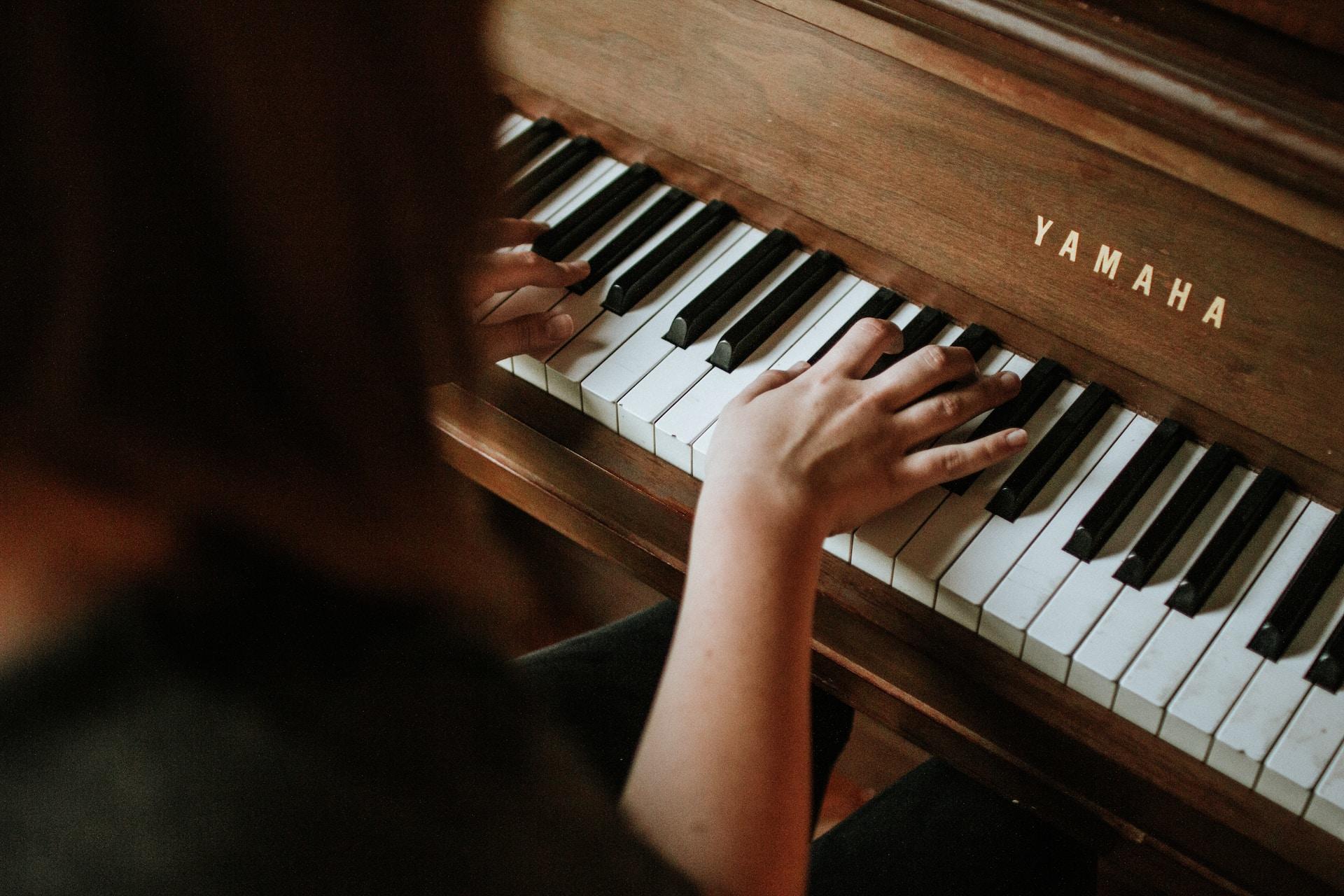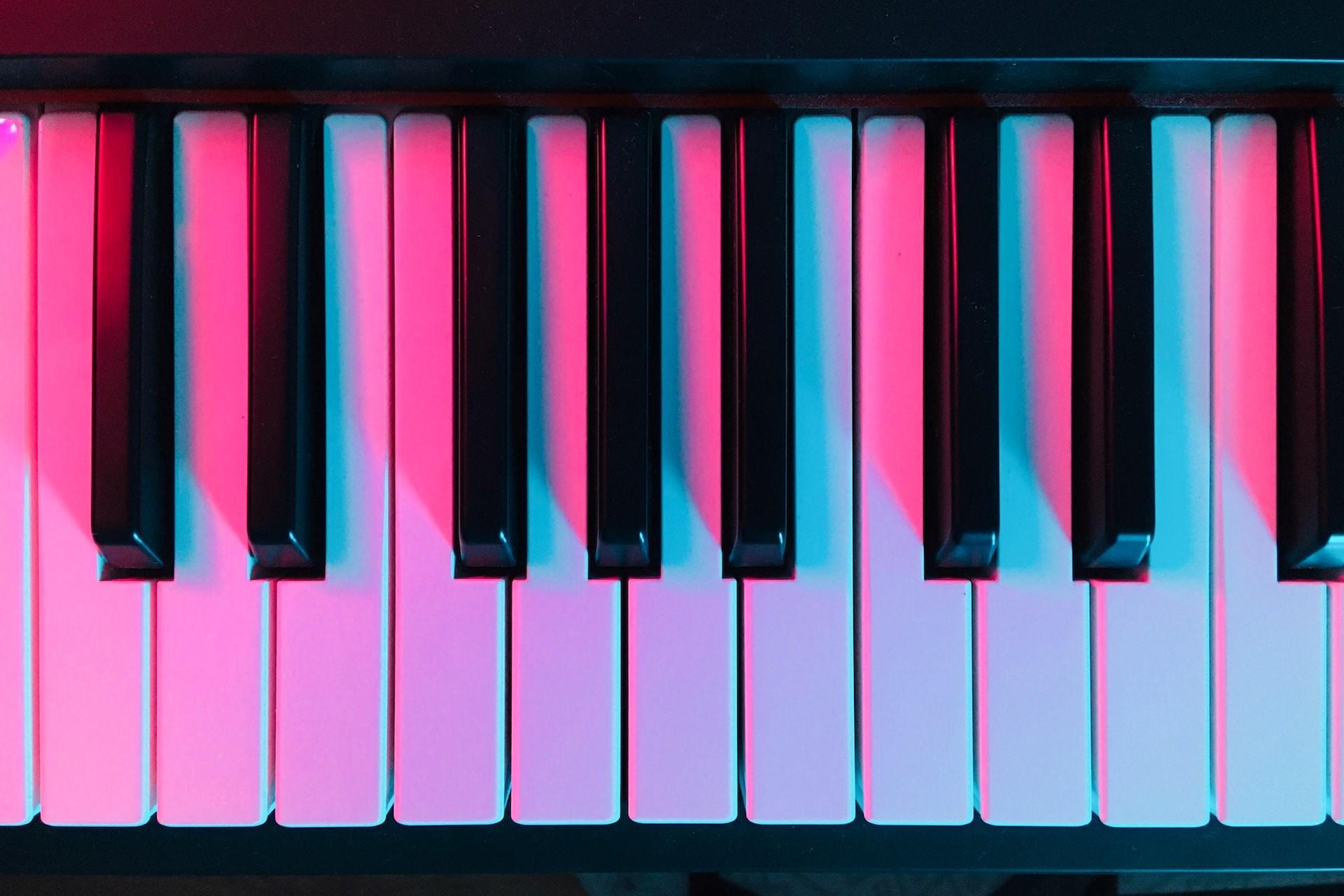Classical music and the piano seemingly go hand in hand. While lots of classical music can use huge orchestras with percussion, woodwind, brass, and string sections, the piano still remains one of the most commonly used instruments in the genre.
To understand the history of classical piano music, we first have to look at how pianos work and the history of the instrument.

How the Piano Works
How the piano works is what makes it so instrumental in classical music. To put it simply, when somebody presses a key, it causes a hammer to strike some strings tuned to the corresponding note.
However, the piano is far more complex and interesting than that and the two main parts we'll look at here are the action (which drives the hammer) and the pedals.
The Hammer Mechanism
The hammer mechanism inside a piano is really what differentiates it from the harpsichord and the clavichord. All three of these instruments have strings that vibrate to create sound and a keyboard that's used by the musician to indicate which note will be produced.

The piano's hammer mechanism is actually quite complex and far more complicated than simply linking the hammer directly to the key that you press.
The whole system between the key and the hammer is often referred to as the piano action (or just action) even though it's actually lots of different parts that cleverly work together.
The key isn't connected to the hammer, but instead, it moves the whippet which moves the jack and then pushes the hammer onto the string. What makes this really clever is that there are lots of things that happen very quickly which allows pianists to play the same note repeatedly and very quickly. Not only does the hammer bounce off the string (resting on it would dampen the sound), but it also quickly resets so that it's ready for the pianist to play the same note again.
Then you have the dampers, which usually rest on the piano strings but not while you're pressing the key for that particular string. This allows you to play a note for longer after pressing the key by keeping your finger on the key.
The Pedals
If you want the note to keep playing after you've taken your finger off the key, you can also use the sostenuto pedal, which stops the dampers from returning to their resting position on the strings of the keys you're currently pressing.
To lift the dampers on all the strings, you can press the sustain pedal. Any note you play with the sustain pedal pressed will ring out as if you never took your finger off the key.
There's a third pedal that's used to dampen the sound of the piano and it was actually the first one to feature on early pianos. This means that the hammer will only strike one of the strings (since every note is made by striking several strings tuned to the same note). This pedal is often used for practicing because it makes a softer sound that won't bother your neighbors!
With a professional private tutor, you can learn how to master the piano! Find piano classes near me on Superprof.
The History of the Piano
Fans of more contemporary music may know that the electric guitar drastically changed and even created brand-new musical genres. The piano was much the same when it was invented.

The piano wasn't the first instrument to feature a keyboard as the harpsichord and clavichord were both used for music before then. However, the harpsichord and clavichord both operate somewhat differently from a piano.
The clavichord, for example, features horizontal strings that are plucked by a plectrum when the musician presses the keys. The harpsichord also uses strings that are plucked, which means that no matter how hard or soft you press the key, the intensity of the sound for both these instruments will be the same.
The piano changed all this because it allowed musicians to play more dynamically based on how hard they hit the keys and how long they held the keys down.
Discover piano classes near me to learn how to play this beautiful instrument.
The piano was invented by the Italian instrument manufacturer Bartolomeo Cristofori in the 18th century, but like with most inventions, you have to also recognize the influence of the technology available before then. After all, the piano wouldn't exist in the way it does without keyboard instruments like the clavichord and harpsichord as they helped influence the keyboard and even the casing, soundboard, and bridge that you find in pianos even today.
Cristofori made harpsichords before inventing the piano and was employed by the House of Medici, an Italian aristocratic family that held power in Tuscany. His early pianos differed from the harpsichord because of the hammer that hit the strings but would rebound off them to allow the strings to ring out.
The piano actually got its name from pianoforte, meaning “soft and loud”, and from a longer Italian name that basically meant that it was a musical instrument that could play softly and loudly. The name went from “piano e forte” to “pianoforte”, “fortepiano”, and finally, piano as we know it today.
Cristofori certainly pioneered the piano action and could be credited, but additions like the sustain pedal were added by Gottfried Silbermann, a German organ manufacturer.
The piano evolved over time and rather than the piano influencing classical music directly, the evolution of both was more of a dialog, with the piano also evolving with the musical genres that used it or were being created.
While the piano is nearly perfect, there are still advancements being made to the technology that are being driven by the world's greatest living pianists.
The Piano and Its Relationship with Classical Music
The piano's dynamic range allowed those already familiar with the harpsichord and clavichord to play more expressively, but it also allowed composers to write more expressive pieces.

Composers like Ludwig van Beethoven, Franz Schubert, and Frédéric Chopin are all famed for breaking ground with novel piano compositions and approaches.
Sonatas, preludes, and études were all types of classical music that prioritized the piano and both solo and chamber music wouldn't exist in the way they do today without the instrument.
Composers like Mozart, Beethoven, and Tchaikovsky all composed piano concertos, which are classical compositions with a solo piano and an orchestra. While the other instruments certainly play important roles, every other instrument accompanies the piano, which is the star of the show. This kind of music obviously couldn't exist without the piano.
Unlock your musical potential by hiring experienced piano teachers. Our dedicated instructors provide personalized lessons to suit your skill level and aspirations, guiding you on a journey of musical discovery and mastery. Elevate your piano playing and explore the world of music with our talented team.
How the Piano Influenced Classical Music Composition and Vice Versa
Composing on and for a different instrument affected how composers created the music of the time and how composers still create music to this day.
Composing music for a keyboard instrument like the piano is different from composing for a guitar and the piano's influence can be seen in the music of the time as composers experimented with harmony, counterpoint, and polyphony. The piano also led to composers using arpeggios, tremolos, and virtuosic runs.
The evolution of the piano and the music that came with it are very much a chicken and egg situation. As the piano evolved and became more commonplace, the instrument ended up as a typical piece of furniture in many homes.

The piano's later designs made it a far more versatile instrument, so much so that it's still used in contemporary music even though the core of the instrument's design hasn't changed in hundreds of years.
Pianos are still advancing now with new technologies and construction techniques, but the changes between the first piano and the pianos that were used by the great classical composers were much greater.
Once composers like Beethoven and Mozart got a taste of the dynamic range a piano was capable of, they wanted more. The more they pushed the envelope in terms of the dynamic range of their music, the more piano manufacturers sought to improve the instrument's range.
It wasn't just the dynamic range that improved, the piano needed to become louder. The most popular compositions were performed in larger concert halls long before PA systems existed and this meant that the pianos had to get much louder. After all, a lot of classical piano music is played alongside dances or alongside theatrical performances so it needs to be loud.
Franz Liszt, for example, pushed for louder pianos which led to pianos using cast iron frames so that the strings could be held under higher tension. Modern pianos exert somewhere between 18 tons and 30 tons of pressure onto the frame!
Chopin and Schumann needed better sustain. They wanted notes to last longer and sound better and when some of the greatest piano composers demanded these improvements, manufacturers naturally obliged.
Even the pedals commonly found on pianos (una corda, sostenuto, and sustain) were all the result of the dialog between composers, pianists, and instrument manufacturers, especially in the early days of the piano when production numbers were much lower and you'd likely have a dedicated instrument manufacturer working to make your piano for you.
You can thank the world's most famous classical composers and pianists for the wonderful versions of the piano we can enjoy playing nowadays!
















